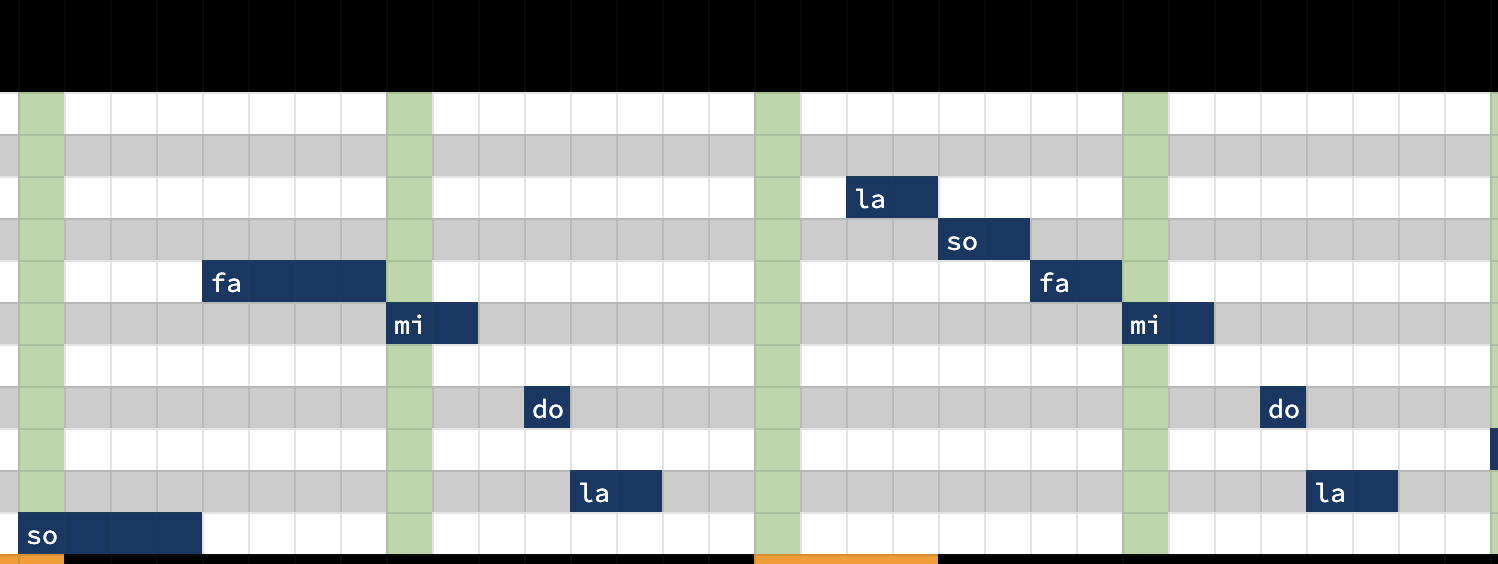@bradejensen for me, I just change the syllables to be in the new key.
I was recently analyzing “somewhere” from west side story and trying to come up with a visual to show what I had in my head. here’s part of it:
jumping from that, into a key change:
I just have to be aware that the “so” past the orange line is “so” for the new key, but it’s “me” in the old key.
Moving to the next part of the tune:
There might be some method for modulations that I’m not aware of, but here’s what’s important:
IF we’re clearly in a new key, the root of that key will sound as “do”, the third of that key as “mi”, etc, so it’s important to use the right solfege for that key, otherwise what we’re singing just won’t feel right.
where fixed do is useful, imo is when there really is no key center or tonal hierarchy at all (which technically isn’t really possible, but it’s a matter of degrees and what we’re used to hearing) and we want a pure representation of pitches independent of the concept of tonal center. That is not the type of concept or music that has ever been interesting to me so it’s not something I’ve dug into much; 99.999999999999999% of the music that people actually listen to or play has clear key centers even if they shift quickly.




 My stance is with only 24 hours in a day, I have to be really choosy about what I spend my time on. Finding something with direct application to a real world scenario is always what I aim for.
My stance is with only 24 hours in a day, I have to be really choosy about what I spend my time on. Finding something with direct application to a real world scenario is always what I aim for.

